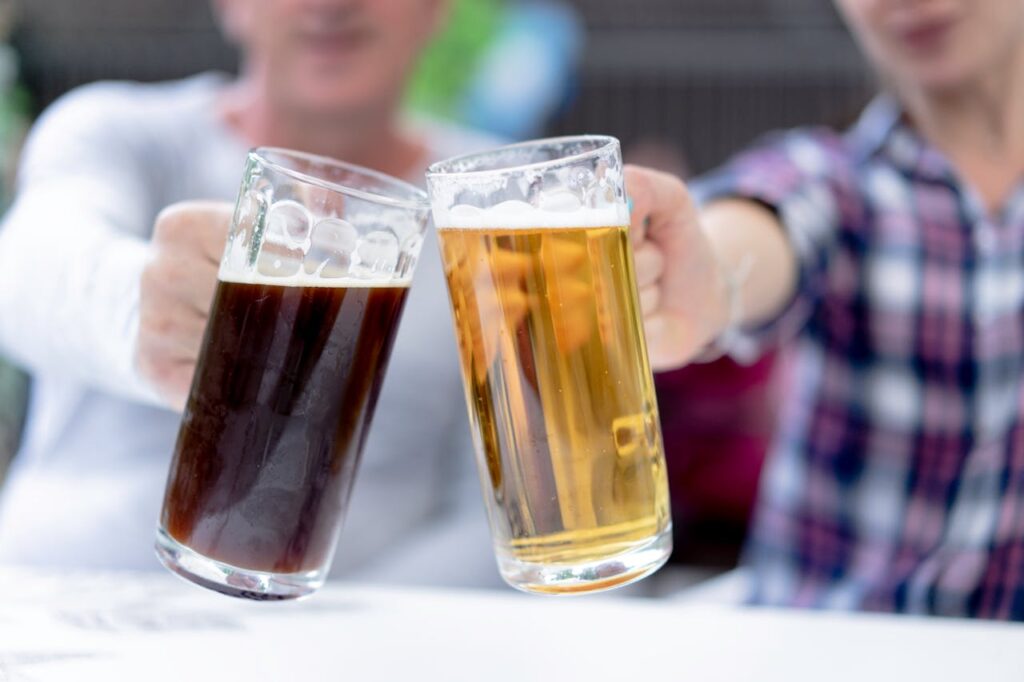
Table of Contents
Alcohol addiction, or alcoholism, is a complex disease influenced by genetic, psychological, and behavioral factors that can not be explained by a single cause. It impacts all social strata and results in brain changes, which make people unable to control their drinking habits. Alcohol abuse may appear in many forms, such as excessive drinking every day and periodic binge drinking. Nevertheless, their main connection is the excessive use of alcohol to the point they cannot stay without it for long periods.
Alcohol Use Disorder
It is a medical term for the inability to reduce or quit drinking alcohol, even when doing so can have serious negative effects on one’s health, relationships, or career. Alcohol use disorder is categorized as a mental illness and can be mild, moderate, or severe. Chronic alcohol misuse leads to brain changes that will sustain AUD and make an individual prone to relapse.
While the condition may seem extremely serious, treatment built on evidence and mutual-support groups, behavioral therapies, and medicines may enable people with disorders to achieve and maintain recovery.
The Cycle of Alcohol Addiction
The cycle of relapse refers to the individual return to substance abuse after a period of struggle to restrain from it. Understanding this cycle and the various stages involved in it will help in developing strategies for intervention and preventing it.
- In this stage, individuals arrive at an initial decision to drink alcohol without understanding how it affects their brain and behavior, mainly due to peer pressure, curiosity, or stress factors. Different people react differently. This will result in developing an addiction to a particular substance.
- The pleasure sensations obtained from these will create a tendency for repeated alcohol consumption to get the same feelings, and slowly, the person will become addicted to it.
- Continuous use and binge drinking will increase the tolerance level of the body and cause excessive alcohol use to get high, underestimating the risks. As tolerance develops, the pattern of seeking alcohol and use increases the risk of addiction and eventually turns into a destructive cycle for the individual.
- Over time, the negative consequences caused by alcohol become apparent. Broken relationships, occupational problems, and physical health issues will become common, and individuals will struggle to restrict their usage and take an exit from the loop.
- This is the phase where the individual understands the requirement of change and shows a desire to stop the consumption of alcohol. This will create an internal conflict between the individual desire to continue or quit the usage.
- Attempts to quit begin at this phase, seeking help from individuals or taking professional help in addiction treatment. However, the emotional issues and carvings will make this phase difficult.
- External triggers will affect the individual’s ability to restrict. These external factors can be from peer pressure or social situations.
- The internal battle, external triggers, and stressors will finally lead to alcohol use disorder relapse, which essentially means the return to the use of substances, breaking the self-made barrier.

Signs and Symptoms of Alcohol Use Disorder
- Frequent or persistent urges to consume alcohol.
- Inability to limit the amount of alcohol that is consumed or to stop drinking once started.
- Drinking more alcohol becomes a necessity to achieve the effect or the reduced effect of the same amount of alcohol.
- Physical or psychological indications during the process of cutting down drinking or stopping it, like trembling, nausea, anxiety, sweating, and agitation.
- Still drinking despite the occurrence of such negative outcomes as health issues, relationship problems, work or school problems, and legal issues.
- Indulging in the habits becomes more important than fulfilling duties, including job, school, and family.
- No desire to continue doing things that were fun before, with a preference for drinking.
- Having this habit often and alone or hiding it from others.
- Face relationship issues, withdrawal from society, or conflicts with family, friends, or colleagues because of alcohol abuse.
- Experiencing mood swings, irritability, depression, or anxiety when not drinking.
- External symptoms include flushed face, slurred speech, staggering gait, or weight loss or gain.
Health Problems Associated with Alcoholism
Chronic alcoholism can cause many adverse conditions. Some of them are cirrhosis, alcoholic hepatitis, fibrosis, etc. These conditions can essentially cause the failure of the liver. Drinking alcohol can affect your heart, causing hypertension, muscle weakness, and stroke. Alcohol abuse can cause stomach inflammation, ulcers, and bleeding, disrupts the digestion process, and can cause diabetes.
Alcoholism also affects an individual’s brain and nerves, leading to stuff like memory issues, trouble moving your hands and feet, and even dementia. It messes with a person’s mood and makes you feel sad and anxious or even causes self-harm. It can make existing mental health problems worse, too.
Drinking impairs one’s immunity and leaves them prone to diseases and infections. Significant risk factors for various diseases affecting cancer. It results in infertility for men and women, sexual dysfunction, and fetal alcohol spectrum disorders. Alcohol intoxication can cause more accidents and injuries to happen.
Management and Treatment
Treatment for Alcohol Addiction
If you have a problem with drinking or if anybody you may know has – this is the point when you must seek help. While some people may manage to control their drinking through family and friends, professional treatment is required if a person has to be alcohol dependent. This may involve a medically supervised detoxification, which is done to get the symptoms or find the reason for the alcoholism under control.
The types of approaches for dealing with alcohol problems are widespread, and the method to actually work might differ from one person to another. The point is that you should choose the support that makes you feel totally free.
There are various prevention programs for prevention. They are as follows:
- Prevention programs involving families, schools, and communities can equip individuals with the knowledge and skills to make informed decisions regarding addiction. Early education can play an important role in ensuring that the use of addiction is preventable to an extent.
2. Early intervention programs can help recognize the signs of substance misuse and provide proper support to reduce the development of a full-blown substance use disorder.
3. Creating supportive and drug-free environments is essential in lowering the overall risk of addiction.
FAQs
There are various health problems for a person dealing with alcohol addiction. This may include liver, heart, and pancreatic issues and reproductive and mental health issues.
Yes, individuals dealing with AUD can be treated if they seek help from a professional drug therapist or in a health facility.
Some medicines have the potential to be addictive. Medications like opioids, fentanyl, and anxiety pills have higher risks and potential addicting factors. These factors may lead to misuse of drugs and cause addiction.
Both are different in how the brain perceives it. One is caused by the repeated seeking of a particular substance and turning it into a basis of addiction. The other may be due to the dopamine release in the brain while doing a specific activity, which does not include substance.
Drug addiction can impact the wiring of the brain. The brain goes through changes when exposed to addictive substances for an extended period.










